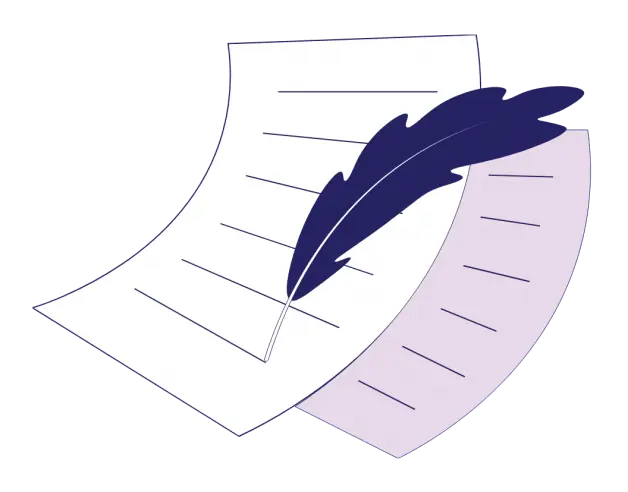
-
4-minute read
-
18th August 2022
How to Write Slam Poetry
Slam poetry is popular with writers from all backgrounds. But what exactly is slam poetry, and how is it different from other poetic styles?
In this post, we discuss the origins of slam poetry and provide you with some tips for writing your own slam poem.
What is Slam Poetry?
Slam poetry is a type of poetry designed to be performed aloud rather than read.
It first appeared in the US in the 1980s, and the first National Poetry Slam was organized by poet Marc Kelly Smith in 1990.
Slam poetry is different from a traditional poetry reading in many ways:
- It is accessible. Slam poetry competitions were organized as an alternative to poetry readings, which were seen as overly academic and formal.
- It is fast-paced. Performers usually have only 3 minutes on stage, so every second counts.
- It encourages audience participation. The audience may boo, jeer, clap, shout, stamp their feet, or click their fingers while a poem is performed.
- It is competitive. Slam poetry is a friendly competition where the audience judges every poem.
You’ll need to keep these features in mind when writing a slam poem.
Tips for Writing Slam Poetry
Writing a slam poem is a little different from writing other forms of poetry. Here are some tips to help you through the process:
1. Experience slam poetry for yourself.
Before you start writing your own poem, it’s important to get an idea of what slam poetry involves.
Attending a competition in person is a great way to get a feel for the connection between the audience and the poet. If you can’t attend a competition in person, though, have a look online for recordings of slam poetry performances.
2. Choose a topic that inspires a response.
A slam poem needs to tell a story, and as your poem will be judged by an audience, this should be a story that will resonate with them in some way.
For this reason, many slam poems are inspired by topics such as current events, race, gender, and sexuality that can evoke powerful emotions in their audience.
When writing your poem, think about subjects that you are passionate about, have personal experience with, or associate with strong emotions. These can be positive or negative; fear, anger, grief, joy, and hope are all powerful responses.
3. Write out all your feelings.
Now that you’ve chosen your theme, get all those related emotions written down on the page.
This doesn’t have to be neat or organized at first. You can even try free writing about the topic to tap into your subconscious.
Find this useful?
Subscribe to our newsletter and get writing tips from our editors straight to your inbox.
Subscribe to Beyond the Margins and get your monthly fix of editorial strategy, workflow tips, and real-world examples from content leaders.
Once you have all your thoughts down, choose the ones that resonate most with you. You can then start refining these into the lines and stanzas of your poem.
4. Give it rhythm.
There are no rules regarding the structure of a slam poem, and most slam poems tend to be free verse.
However, as a slam poem is meant to be spoken aloud, it’s important to think about the rhythm of your piece and how it will sound.
You can experiment with rhythm when writing your poem by:
- Changing word choice and order to emphasize different sounds.
- Using different rhyme schemes (or no rhyme scheme at all).
- Using alliteration and repeating sounds.
5. Trim all the extra bits.
Remember, your poem must be short enough to perform in under 3 minutes! You also need to keep your audience’s attention for those 3 minutes.
Any extra words or lines that aren’t essential to the meaning of your poem will need to be cut. And while poetic devices can be useful, you don’t want to include so many that you lose your poem’s story (or the audience’s attention).
Try reading your poem aloud and timing yourself: if you take more than 3 minutes, your poem needs a trim!
6. Plan your performance.
Of course, the point of slam poetry is that it doesn’t just exist as words on a page.
Once you’ve written your poem, you’ll need to know how to perform it.
Your performance could include:
- Speeding up or slowing down passages
- Pausing to emphasize a word or phrase
- Gesturing with your hands
- Moving your body
- Stamping or clapping a rhythm
- Using facial expressions
However you decide to perform your poem, remember the golden rule: practice makes perfect.
Poetry Proofreading Services
Whether they’re meant for reading or performing, your poems are safe with our poetry proofreaders and editors. They’re available 24/7 to give your words a final polish, and you can even try their services for free.




